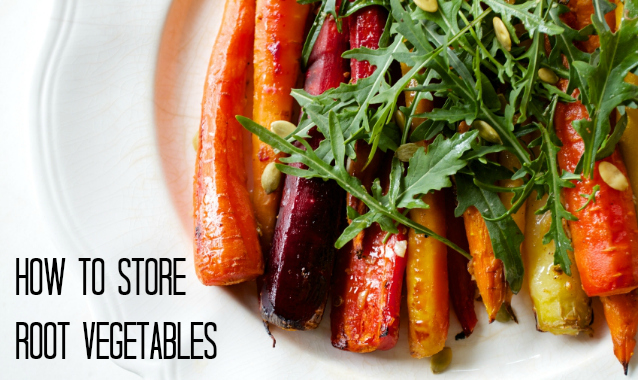How To Store Root Vegetables
November 3, 2014
If you’re interested in eating seasonally like I am, root vegetables are one of the most common vegetable choices for colder months. There aren’t a lot of vegetables growing in most of the country during the winter. Those of us in the northeast have an even smaller selection to choose from than those in the south. I prefer to buy fruits and vegetables that are in season. It lets me buy food that is grown locally rather than purchasing produce from other countries or other states that needs to be trucked in.
How To Store Root Vegetables
Root vegetables include things like carrots, potatoes, beets, turnip and parsnips. For the most part, root vegetables can be left in the ground in the garden until the ground freezes. This will be a much later date in the south than it is in Vermont. We generally need to have all of our fall root vegetables out of the ground in the garden by December at the latest and that’s if we keep it protected from snowfall. It’s tough to dig up potatoes in a garden that has two feet of snow on it.
Root vegetables need to be stored in a cool location for them to last as long as possible. A few suggestions are a cool basement, root cellar, refrigerator or a spot on the back porch. The ideal temperature is about 38F. Dig the vegetables from the garden and brush off as much dirt as possible. Allow them to lay on top of the ground in the garden (in the sun) for a few hours. This will kill the “root hairs” on the vegetable which will put the vegetable in a dormant state. Never wash the vegetables before you store them.
Once the vegetables have set in the garden for a few hours in the sun, brush off the rest of the dirt and snip off any greens at the top. The most important aspect of a storage spot is a consistent cool temperature. Variations in temperature can start new growth which you do not want. If your basement or storage spot is cool but not insulated, you can take a large cardboard box and fill it with two or three inches of sawdust to help insulate it. Place a layer of vegetables on top of the saw dust, leaving two to three inches around and away from the sides. Cover with a 1/4″ layer of sawdust and continue to layer until the box is full. Then top off with another two to three inches of sawdust.
As you use your root vegetables throughout the winter, check for any vegetables that may have started to spoil. Remove them promptly to prevent the others from going bad. Following this method, you should be able to store your root vegetables for several months.
How do you store your root vegetables?







